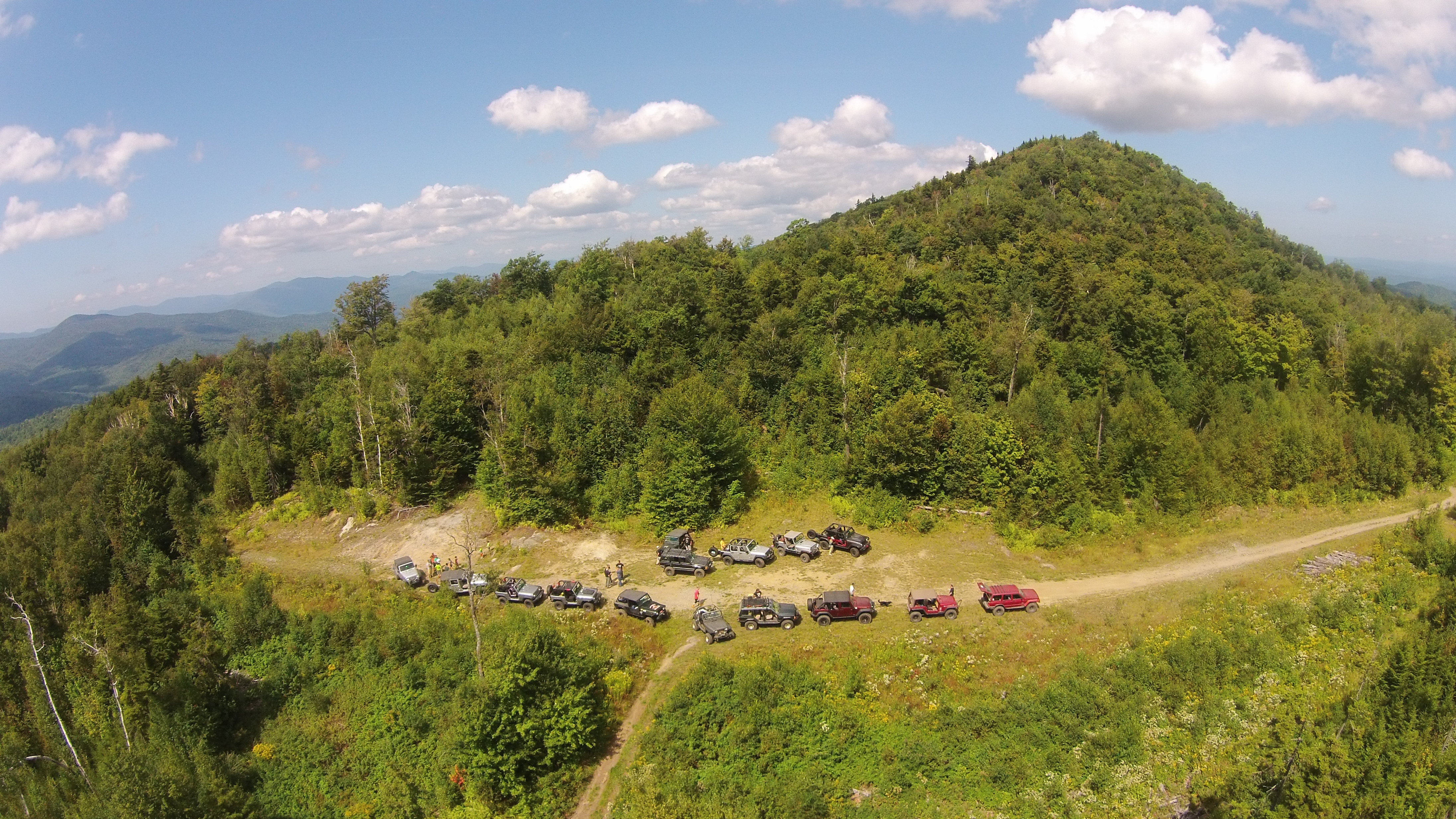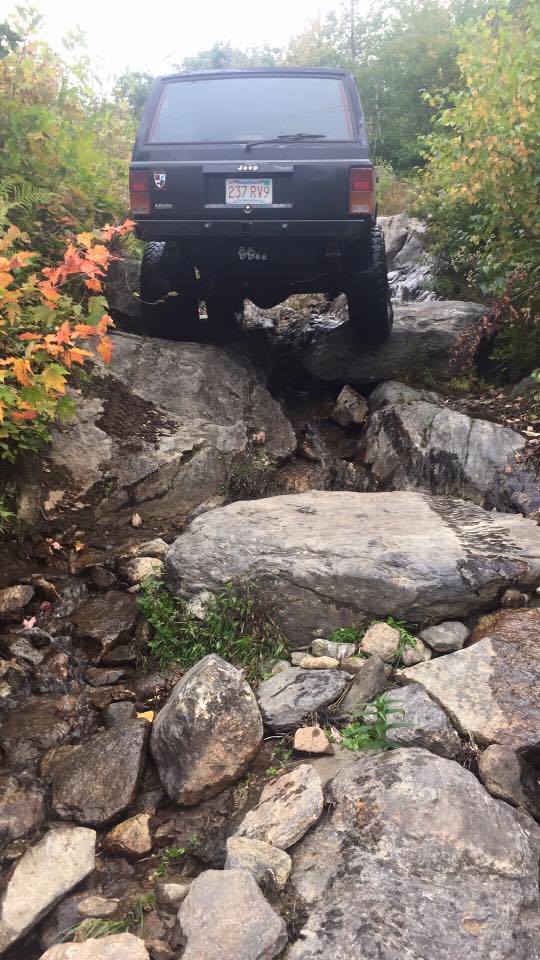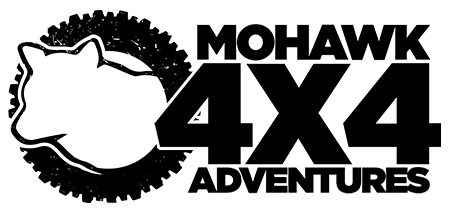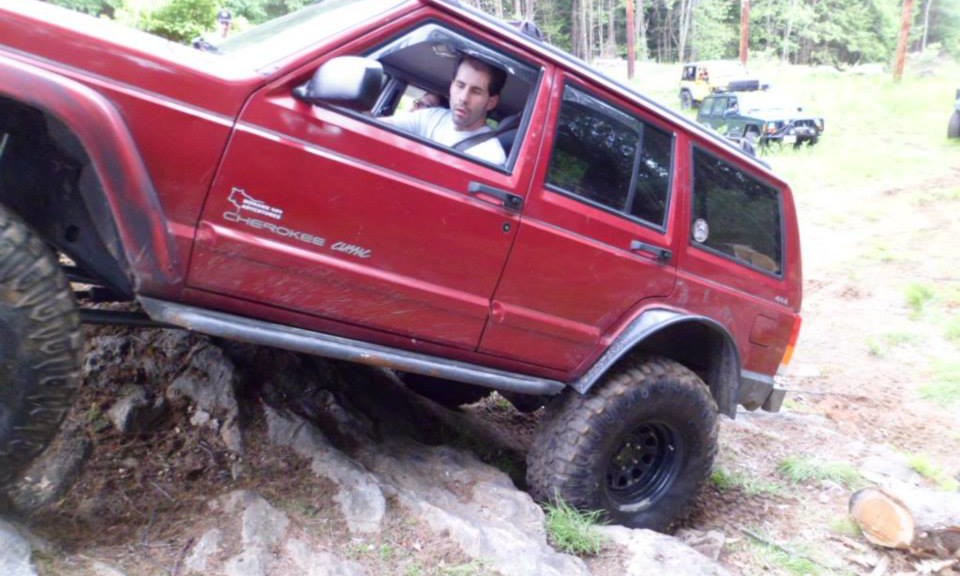Trail and Vehicle Rating Guidelines
In 2016, we will begin to use a color coded trail and vehicle rating system. These are not rules, just guidelines.
GREEN – The easiest trails. The basic 4WD vehicle.
These trails are often New Hampshire Class VI Roads, Massachusetts Ch 90 B Roads and Vermont’s Class IV Highways. These trails are well suited to stock 4WD vehicles with low range, and minimal additional equipment. In our club, all vehicles must be equipped to meet our minimum requirements, such as front and rear recovery points*, a fire extinguisher, a 29″ minimum tire size (or the metric equivalent, such as a 225/75R16)), a full size spare tire, a first aid kit and working seat belts. Recoveries are needed infrequently on a GREEN trail, and may only require occasional use of four wheel drive for traction. Our club historically has done a few runs a year with a focus on getting out there to learn and also experience new & distant trails with our friends and family, just to take in the off-road scenery. Fewer than 5% of our members are operating 4x4s that are only suitable for this trail rating. Other than New England pinstripes, vehicle damage is not likely to happen on a green trail, although it is always possible.

*Surface mounted D rings are NOT acceptable recovery points in Mohawk 4×4 Adventures. Please do not confuse a load tie down D ring with a recovery point. Recovery D rings will be through welded on both sides and are specifically made for recovery.
Tow hooks are usually bolted to the frame or on a unibody vehicle with a system of reinforcing hardware. It is not acceptable for them to be attached to stock bumper skins via bolts or welding.
All tow points are subject to inspection by authorized club members.

BLUE – Moderately Challenging Trails for Moderately Modified 4x4s.
A slightly modified 4×4 should be able to do ok on most blue trails with careful driving. 95% of our members have rigs capable of blue trails. Most rigs have a couple of inches of lift, slightly over sized tires, skid plates and at least one bumper that has been upgraded. Short wheel base Jeeps will most often have a 31 – 33” tire on blue trails. Longer wheelbase Jeeps will have 33-35” tires. About half these rigs will have modified gears and a locker. 4 wheel drive is used for most of the trail ride and there are some moderately challenging obstacles along the way. It’s not unusual to have a couple of stuck rigs and sometimes some minor vehicle damage. You’ve put some time and money into your machine and you expect minor setbacks, but it’s all in a day of wheeling. Blue trails, while on the moderate side of the difficulty spectrum, do have an increased risk of body damage.

BLACK – Demanding Trails for Experienced Drivers and Modified 4x4s. “Lifted, Locked and Loaded.”
These trails feature deeper water and mud crossings and more rock. Rock ledges in the trails will exceed 12” in height and can be as high as 6 feet. There are not many go-arounds to use and rigs on the trail are equipped with at least 33” tires, one locker and a winch. Skid plates, body trimming, and mud terrain tires are par for the course. The vehicles we use on black trails are well equipped, well prepared and ready for most anything. As always, it’s, “As slow as possible, but as fast as necessary.” Even really well equipped rigs will need well experienced operators and 4 wheel drive use is mandatory. Black Trails will have fewer, if any, go-arounds at difficult obstacles. Expect more vehicles requiring recovery and more frequent mechanical failures. Body damage is a very real possibility.

*** DOUBLE BLACK Trails are when the club is running difficult trails and we are asking for members to only bring 4x4s with a winch, two lockers and 34” or larger tires. Considerations can be made for short wheel base vehicles, like a Samurai on 31” tires that otherwise has two lockers and a winch. We do these runs to satisfy the needs of the more hardcore members of the club. Participation may require prior approval, based solely on equipment. ***
RED Trails are almost always purpose built trails on private land, built to be extremely difficult to conquer.
We have club members that can and do ride on red trails, although most of the trail users will have highly modified tube chassis with tires larger than 38” tall. We have not used any dedicated RED trails as a club, although some of us have done red obstacles on our trail runs.

